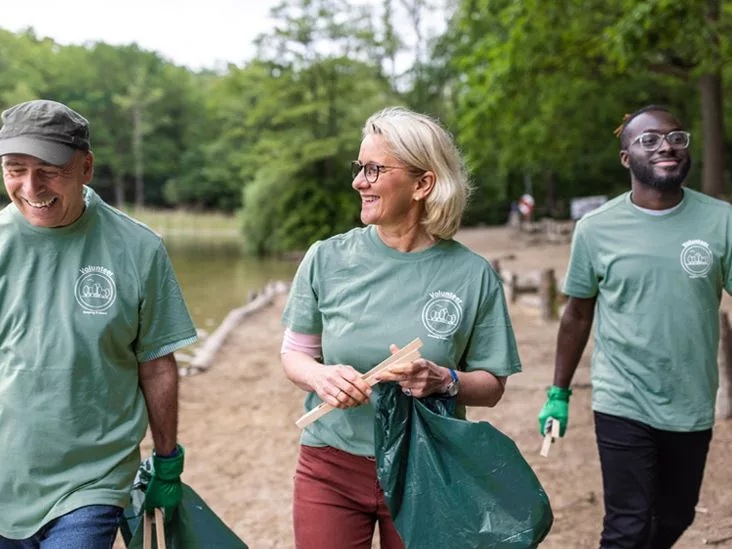Ever wonder why you feel a little lighter after helping a neighbor or why your mood lifts when you spend a Saturday at a community garden? It’s not just “good vibes.” Volunteering can actually change the way your brain, heart, and even your social circle work. Below you’ll get the straight‑up facts on how giving your time can make you healthier, plus some real‑world tips so you can start feeling the difference right away.
Mental Wellness Benefits
What does research say about stress and anxiety?
When you volunteer, you’re usually surrounded by people, purpose, and activity – all things that can shrink stress. According to a Harvard Health article, volunteers report lower cortisol levels and a noticeable drop in anxiety because the act of helping triggers dopamine, the brain’s “feel‑good” chemical.
How does volunteering improve self‑esteem and purpose?
Imagine teaching a kid to read for an hour each week. When they finally nail a word, you feel a burst of pride. That’s the self‑esteem boost many volunteers describe. A Mayo Clinic report notes that older adults who regularly volunteer experience a 20‑30 % increase in life satisfaction, simply because they see the tangible impact of their effort.
Can volunteering protect against cognitive decline?
St. Peter’s Health recently highlighted that mentally stimulating volunteer work – like tutoring, mentoring, or planning community events – can keep the brain wiring sharp. One longitudinal study found volunteers had a 15 % lower risk of developing mild cognitive impairment over five years. In short, staying mentally active while you help others keeps your own mind from going idle.
What are the mental‑health risks of over‑volunteering?
Too much of a good thing can become burnout. When you stretch yourself thin, you might feel drained instead of energized. The key is balance: most research points to around 2‑3 hours per week as the sweet spot for mental benefits without the fatigue.
Practical tip
Set a weekly “volunteer alarm” on your phone, then track how you feel after each session. If you notice lingering exhaustion, trim the time or swap to a lower‑intensity activity.
Physical Health Rewards
How does volunteering lower blood pressure?
A groundbreaking study from Carnegie Mellon found that adults over 50 who logged at least 200 hours of volunteer work per year had significantly lower systolic blood pressure than their non‑volunteering peers. The researchers think the combo of gentle exercise and stress reduction does the trick.
What impact does volunteering have on heart health?
HealthDay’s recent piece listed several heart‑healthy wins: reduced cholesterol, lower BMI, and even fewer “big‑C” events like heart attacks. The common thread? Volunteers tend to be more physically active – think gardening, walking patients, or setting up community fairs – which naturally boosts cardiovascular fitness.
Does volunteering increase overall physical activity?
Even “light” volunteer jobs involve moving around. According to the NCBI review, other‑oriented volunteering (helping others directly) was linked to a 3‑11 % rise in daily step counts compared with self‑oriented tasks like paperwork.
Are there any physical hazards to watch for?
Sure, lifting heavy boxes or standing for long periods can strain muscles if you’re not used to it. A quick warm‑up, proper footwear, and asking for assistance when needed can keep those aches at bay.
Quick safety checklist
| Task | Safety tip |
|---|---|
| Heavy lifting | Bend knees, keep back straight, ask for help. |
| Standing long periods | Shift weight, wear supportive shoes, take micro‑breaks. |
| Outdoor work (gardening) | Sun protection, hydrate, stretch before/after. |
Social Connections Boost
How does volunteering expand my social network?
The 2023 AmeriCorps survey revealed that 60 % of volunteers made at least one new friend through service. Those connections turn into informal support groups, which are proven buffers against loneliness and depression.
What role does belonging play in overall wellbeing?
When you belong to a cause, you gain a sense of identity beyond “just me.” St. Peter’s Health notes that feeling part of a community improves immune function – the body literally fights off illness better when you feel socially connected.
Can virtual volunteering still deliver health gains?
Yes! Harvard’s “benefits of volunteering without leaving home” study showed that remote tasks like tutoring online or providing translation services still boost mood and reduce isolation, especially for people with mobility limits.
Potential downsides of social overload?
Sometimes a packed volunteer schedule can crowd out personal downtime, leading to social fatigue. The trick is to pick one or two groups that truly align with your interests and let the rest of your social life flourish elsewhere.
How to keep it balanced
Schedule volunteer shifts the same way you would a gym class: set a recurring time slot, then treat it as a non‑negotiable appointment. If a week feels too busy, swap a shift for a coffee catch‑up with a friend instead.
Ideal Volunteering Hours
What is the optimal weekly/monthly hour count?
Studies converge on a “Goldilocks” range:
- 2‑3 hours per week (Scripps) – enough to feel benefit without burnout.
- 100 hours per year (Carnegie Mellon) – linked to lower blood pressure.
- 200 hours per year (Harvard) – associated with the strongest cardiovascular gains.
Pick the number that fits your schedule; consistency beats intensity.
Does the type of volunteer work matter?
Research from the National Center for Biotechnology Information distinguishes “other‑oriented” (helping others directly) from “self‑oriented” (tasks that benefit the volunteer more than the community). The former consistently outperformed the latter on mental‑health metrics, suggesting that caring for others first is the secret sauce.
How to track my volunteering for health benefits?
Try a simple spreadsheet or a free app like “VolunteerTracker.” Log date, hours, activity type, and a quick mood rating (1‑5). Over time you’ll see patterns – maybe a gardening shift lifts your energy more than an office‑admin role.
When should I pause or adjust my volunteering?
Listen to your body and mind. Signs that you need a break include:
- Persistent fatigue after shifts.
- Increased irritability or anxiety.
- Physical aches that don’t improve with rest.
If any of these appear, scale back or switch to a less demanding role.
Start Your Action Plan
What are the first three steps to begin?
- Find a cause that feels “other‑oriented.” Whether it’s feeding a shelter, tutoring kids, or cleaning a park, pick something that puts others first.
- Commit to 2‑3 hours a week. Put it on your calendar like a doctor’s appointment.
- Log your time and feelings. Use the spreadsheet tip above to see how each session impacts your mood, stress, and energy.
How to integrate volunteering into an existing wellness routine?
Think of your day as a puzzle. If you already jog three times a week, replace one of those runs with a community‑garden shift that also gets you moving. If you do yoga on Sundays, add a 30‑minute virtual tutoring session after class. The goal is to weave service naturally into habits you already love.
Resources for finding reputable opportunities
Start with trusted platforms:
- VolunteerMatch – filters by cause, location, and time commitment.
- Idealist – great for remote and skill‑based roles.
- Local hospitals, libraries, and food banks – often post needs on community bulletin boards or their websites.
Before you sign up, check the organization’s transparency rating on Guidestar or Charity Navigator to ensure your time is well‑spent.
Conclusion
Volunteering isn’t just a feel‑good hobby; it’s a proven recipe for better mental, physical, and social health. By choosing purposeful, other‑oriented activities and keeping your commitment to a realistic 2‑3 hours per week, you can lower blood pressure, sharpen your mind, and build a supportive network – all while making the world a little brighter. So why not pick one local need today, log your first hour, and watch the benefits ripple outwards? Share your first experience in the comments or on social media with #VolunteerHealthBoost – we’d love to hear how giving back is changing your life.


















Leave a Reply
You must be logged in to post a comment.